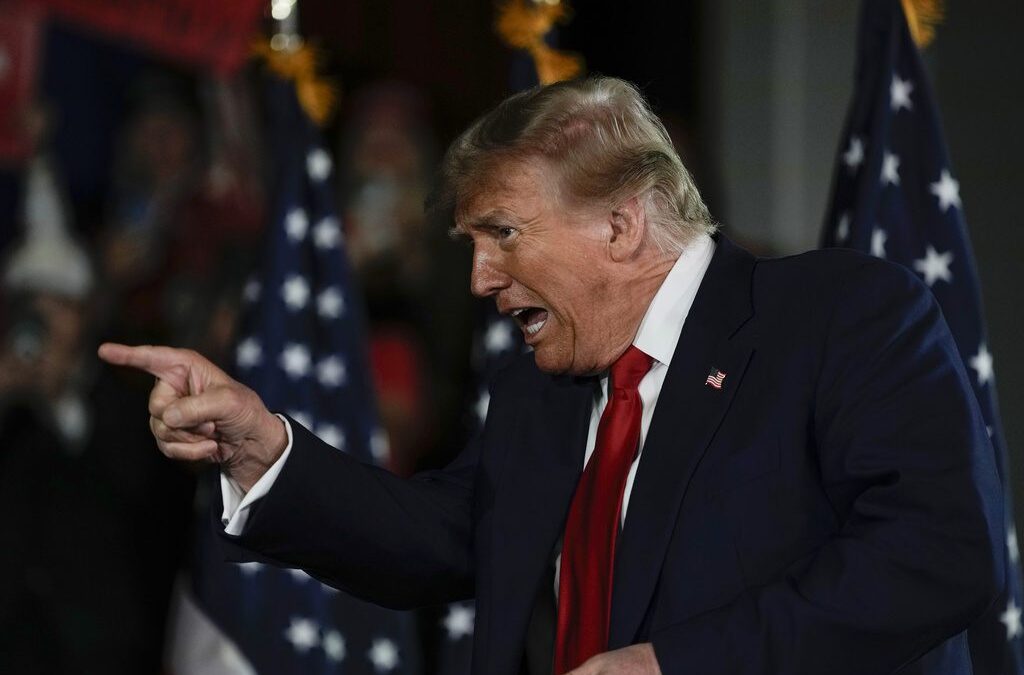
Democratic presidential candidate former Vice President Joe Biden answers a question as President Donald Trump listens during the second and final presidential debate Thursday, Oct. 22, 2020, at Belmont University in Nashville, Tenn. (AP Photo/Morry Gash, Pool)
With three proposals, Biden could cut poverty in half, study says
RICHMOND-Based on three of his proposals, Joe Biden could cut Virginia’s and the country’s poverty rate in half. That was the analysis from Virginia Commonwealth University this week, as the school’s College of Humanities studied Biden and President Donald Trump’s economic plans.
Eight million people have slipped into poverty over the last six months. And while the stock market continues to improve, the job numbers don’t, at least not for everyone. Employment rates are currently one fifth of what they were last year for low wage earners. The next president, VCU researchers wrote in the study, will have the opportunity to either widen the gap between rich and poor or narrow it.
But when it comes to economics, Biden and Trump take very different routes. The Trump plan, VCU researchers wrote, is based on maintaining the 2017 tax cuts his administration pushed through. Biden meanwhile wants to roll back tax cuts for those making more than $400,000.
Who did the Jobs Act benefit?
Looking at Trump’s plan, we already have an example of how it would work. We just need to look at 2018. With no pandemic, no protests or other issues, a typical low-income household saved $40 with the Tax Cut and Jobs Act. A middle-income household, meanwhile, saved $800 and the top 1% of households, anyone making more than $733,000, got an average tax cut of $33,000. Who actually benefited from that, the VCU study asks us to consider. While any money saved helps a family, it’s hard for VCU researchers to see significant savings for any group other than the 1%.
The individual portion of the tax cuts expires after 2025. If it stays active instead of expiring, it will cost the country $1.9 trillion in lost revenue over an 11-year period. VCU researchers cited data from the Congressional Budget Office to back that up. They also pointed to data from the Brookings Institution that said the tax cuts didn’t pay for themselves.
“In principle, a tax cut could “pay for itself” if it spurred substantial economic growth—if tax revenues rose from the combination of higher wages and hours worked, greater investment returns, and larger corporate profits,” William Gale wrote in the Brookings analysis. “The TCJA, however, is not that tax cut.”
The issue is that Congress kept spending money, while taking in less. That’s what a tax cut is, VCU researchers explained. It reduces the amount of revenue brought in. And if you take in less money while spending more, VCU and Brookings officials agreed, that will eventually put you in debt. That’s part of the problem here. The US had a shortfall in revenue of $275 billion in fiscal year 2018, when these cuts took effect.
“Given that the economy grew, and in the absence of another policy that could have caused a large revenue loss, the data imply that the TCJA substantially reduced revenues,” Gale wrote for Brookings.
Biden looks to restore Obama tax rates
Biden’s plan, on the other hand, would basically hit a reset button. Those who make $400,000 and above would go back to Obama-era tax rates. He also proposes taxing capital gains and dividends from millionaires at the same rate as employment income.
“[That] would also have major implications for inequality, given that rich households make much of their money from stock and yet often pay lower taxes than salary and wage earners on it,” VCU researchers wrote.
Biden’s plan calls for increasing Social Security benefits for lower-income and older seniors. He’s also proposed increasing the top corporate tax rate from 21% to 28%. Instead of the $1.9 trillion lost over 10 years from Trump’s plan, this would grow revenue by $4 trillion over the same period.
And again, the VCU study pointed out, if you have more money, you can use it on more things. In this case, the money would be spent on an expansion of the earned-income tax credit as well as providing federal funds for housing vouchers for low-income renters. The final part of the money would go towards turning the federal income tax credit into a larger, unconditional child allowance.
“[These three proposals] would cut the poverty rate by half, reduce the child poverty rate by three quarters and substantially narrow the racial and ethnic poverty gap,” the VCU study says.
Politics

VIDEO: Youngkin won’t add legal protection for birth control access
Access to birth control remains vulnerable to potential future attacks after Republican Gov. Glenn Youngkin effectively blocked a bill that would...

Trump says he would allow red states to track pregnancies, prosecute abortion ban violators
In an interview published by Time magazine this week, former president Donald Trump detailed his plans for a potential second term and said he would...
Local News

The zodiac signs of 12 iconic women offer insight into their historic accomplishments
Zodiac signs can tell you a lot about someone’s personality. Whether they’re an earth, water, air, or fire sign, these 12 categories (which are...

Virginia verses: Celebrating 5 poetic icons for National Poetry Month
There’s no shortage of great writers when it comes to our commonwealth. From the haunting verses of Edgar Allan Poe, who found solace in Richmond's...





